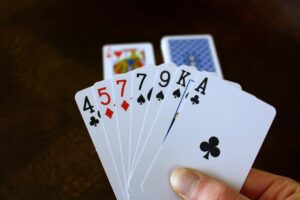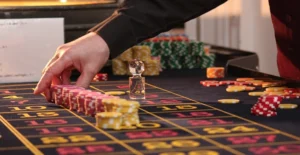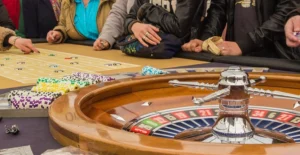Many people enjoy card games, and Rummy and Gin Rummy are two popular choices. While they might seem similar at first glance, understanding what is the difference between Rummy and Gin Rummy can help you pick the right game for your next get-together. This article breaks down the key distinctions to help you know your Rummy from your Gin Rummy.
Key Takeaways
- Rummy typically involves more players and can have a longer game duration, while Gin Rummy is usually a two-player game played at a faster pace.
- Gin Rummy has a specific objective of ‘knocking’ when your deadwood points are low, a feature not present in standard Rummy.
- The number of cards dealt differs, with Rummy usually using 13 cards per player and Gin Rummy using 10.
- While both games use sets and runs, Gin Rummy’s scoring system often includes bonuses for ‘gin’ hands and penalties for ‘undercuts’, which are not standard in Rummy.
- Deck composition can vary, with some Rummy games using jokers as wild cards, whereas Gin Rummy typically does not use jokers.
Definition & Origins of Rummy vs Gin Rummy
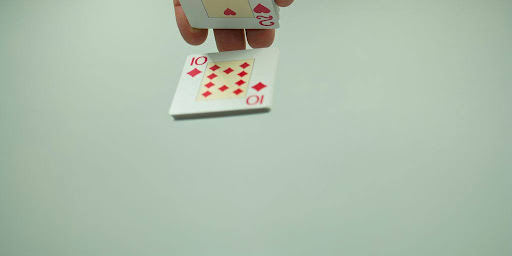
Rummy and Gin Rummy, while sharing a common ancestor, present distinct experiences for players. Understanding the core differences in their rules, objectives, and gameplay is key to appreciating each game’s unique appeal. These differences in rummy card games can significantly alter the strategy and pace of play.
Origins of Rummy
The Rummy family of card games is quite extensive, with roots tracing back to Spain and the game of Conquian. Over time, various iterations spread, evolving into the many forms of Rummy played today. It’s a game that has seen countless variations, making it a versatile pastime enjoyed by many.
Origins of Gin Rummy
Gin Rummy, specifically, emerged in the early 20th century, often credited to Elwood T. Baker in New York around 1909. It gained significant traction, becoming a popular two-player game, especially after its surge in popularity during the mid-1900s. Gin Rummy is a streamlined version of Rummy, designed for quicker play and a more focused, head-to-head contest. Its popularity grew rapidly, even surpassing other games in terms of new players learned during certain periods.
Key Distinctions
While both games involve forming sets and runs of cards, the specifics of how this is achieved, along with the game’s objective and ending conditions, set them apart. For instance, the way players approach melding and the importance of minimizing deadwood are central to the differences in rummy card games. The nuances of gin rummy scoring explained also contribute to the distinct feel of each game.
Number of Players: Multi Player Rummy vs Head to Head Gin Rummy
When you’re figuring out how to play the rummy card game, one of the first things to consider is who you’ll be playing with. This is a pretty big difference between the standard Rummy game and Gin Rummy.
Player Count
Gin Rummy is almost always a two-player game. While you can sometimes find variations for four players, where partners team up, the classic Gin Rummy experience is a one-on-one showdown. This makes it perfect for a quick game between two people. On the other hand, traditional Rummy is much more flexible when it comes to the number of players. You can easily play with anywhere from two to six people. This makes Rummy a great choice for family gatherings or when you have a larger group looking for a game.
| Game | Number of Players |
| Rummy | 2 to 6 |
| Gin Rummy | 2 (sometimes 4) |
Game Dynamics Based on Player Count
The difference in player count really changes the feel of the game. Gin Rummy, being a head-to-head contest, often feels more intense and strategic. Every move you make directly impacts your single opponent. With Rummy, especially with more players, the game can feel more social. You’re not just competing against one person; you’re managing your hand while keeping an eye on what multiple opponents might be doing. This can lead to different kinds of decisions and a more relaxed atmosphere, depending on the group.
The social aspect of Rummy can be quite appealing, as it allows for more interaction and less direct, intense competition compared to the focused duel of Gin Rummy.
Group Size Suitability
- Gin Rummy: Ideal for couples, one-on-one challenges, or when you only have one other person available to play.
- Rummy: A better fit for larger families, parties, or any situation where you have three or more players.
Choosing between them often comes down to the number of people you have ready to play. If it’s just you and a friend, Gin Rummy is a solid choice. If you’ve got a bigger crowd, Rummy is likely the way to go. You can learn more about the Rummy card game rules to get started.
Deck Composition & Jokers: Wild Cards vs No Joker Play
Deck Composition and Joker Usage
When you sit down to play Rummy or Gin Rummy, the cards themselves tell a bit of a story about how the games differ. Typically, Rummy games, especially those played in larger groups or with more players, often utilize multiple decks of cards to ensure enough cards are available for everyone. This can mean using two standard 52-card decks, sometimes combined with a few jokers. The exact number of decks and jokers can vary depending on the specific Rummy variation being played, but the inclusion of jokers as wild cards is quite common.
In contrast, Gin Rummy is generally played with a single, standard 52-card deck. Crucially, Gin Rummy does not use jokers. This absence of wild cards significantly impacts the strategy, as players must rely solely on the natural cards to form their sets and runs. The Ace’s value also differs; in Rummy, it can be high or low, but in Gin Rummy, it’s typically considered the lowest card.
Here’s a quick look at the typical card setup:
| Feature | Rummy (General) | Gin Rummy |
| Deck Size | Often 1 or 2 decks (108-110 cards) | 1 deck (52 cards) |
| Jokers | Frequently used as wild cards | Not used |
| Ace Value | High or Low | Low |
The presence or absence of jokers and the number of decks used are foundational differences that shape the gameplay and strategic approaches in Rummy and Gin Rummy. It’s not just about the number of cards; it’s about how those cards can be manipulated to form winning combinations. Understanding this distinction is key to appreciating the unique challenges each game presents. For those interested in exploring different card game setups, learning about 21-card rummy can offer further insights into deck variations.
In Rummy, a joker can substitute for any card to complete a set or run, adding a layer of flexibility. This means a player might have a run like 7-8-Joker-10, where the Joker stands in for the 9. This wild card element can speed up the process of forming melds. However, in Gin Rummy, without jokers, players must find natural sequences and sets. This often leads to a more focused approach on collecting specific cards and a greater emphasis on managing the cards in hand to minimize deadwood.
Hand Size: 13 Card Rummy vs 10 Card Gin Rummy
When you sit down to play a hand of cards, the number of cards you’re dealt can change how the game feels. It’s one of those subtle differences that makes each game unique.
Cards Per Player
In a standard game of Rummy, players typically receive 13 cards. This larger hand size allows for more complex combinations and strategies to develop throughout a round. You’ve got more options to play with, more chances to build those sets and runs. It feels a bit more expansive, you know?
Gin Rummy, on the other hand, deals a more concise hand of 10 cards. This smaller hand forces players to be more selective and efficient with their draws and discards. Every card counts, and you have to think a bit more carefully about what you’re keeping and what you’re letting go. It’s a tighter game, more focused.
Here’s a quick look at the hand sizes:
| Game | Cards Dealt Per Player |
| Rummy | 13 |
| Gin Rummy | 10 |
This difference in hand size directly impacts the pace and strategy of each game. With 13 cards in Rummy, you might find yourself holding onto potential melds for longer, waiting for the perfect card to complete a sequence or set. The game can feel a bit more drawn out, with more opportunities for players to build up their hands. It’s a bit like building a puzzle with more pieces.
Gin Rummy’s 10-card hand, however, encourages quicker decision-making. Players are often looking to form melds and reduce their
Game Objective: Sets, Sequences, Pure Runs & Deadwood Counts
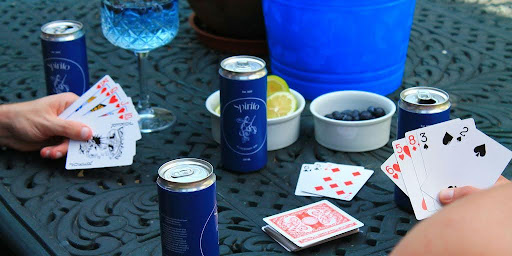
The main goal in both Rummy and Gin Rummy is to collect cards that form specific combinations. These combinations are called melds. There are two types of melds you’ll be aiming for: sets and runs.
Sets
A set is made up of three or four cards that share the same rank but come from different suits. For example, having the 7 of hearts, 7 of diamonds, and 7 of spades is a valid set. You can also have a set of four, like the King of spades, King of hearts, King of diamonds, and King of clubs.
Sequences (Runs)
A sequence, or run, is a group of three or more cards that are consecutive in rank and all belong to the same suit. Think of the 3, 4, and 5 of clubs as a run. Aces are typically considered low, meaning they can only be used at the beginning of a run (like Ace, 2, 3 of hearts) and not at the end (like Queen, King, Ace of spades).
Pure Runs
A pure run is a sequence where the cards are consecutive and of the same suit, without any wild cards. For instance, the 9, 10, Jack of diamonds would be a pure run.
Deadwood Counts
Any cards in your hand that do not form part of a valid set or run are considered “deadwood.” The objective, especially in Gin Rummy, is to minimize the total point value of these deadwood cards. When a player “knocks,” they are declaring that the value of their deadwood cards is below a certain threshold. The player with the lowest deadwood count at the end of a round usually wins.
In Gin Rummy, a player can only call “Gin” when they have no “deadwood” cards remaining. This means all cards in their hand must form valid sets or sequences, leaving no unmatched cards. This is a key difference from standard Rummy, where some deadwood is often acceptable when knocking.
Here’s a quick look at how deadwood points are typically counted:
- Face cards (King, Queen, Jack): 10 points each
- Ace: 1 point
- Number cards (2 through 10): Face value
Winning a round often involves having the lowest deadwood total, or, in the case of Gin Rummy, having zero deadwood. The scoring systems can vary, but the core idea is to form melds and reduce your deadwood.
Drawing & Discarding Rules: Flexible Rummy vs Turn-Based Gin Play
Drawing and Discarding
In both Rummy and Gin Rummy, the turn structure involves drawing a card and then discarding one. You start your turn by picking the top card from either the stock (face-down draw pile) or the discard pile (face-up cards). The choice of which pile to draw from is a key decision in both games. After drawing, you aim to form valid melds (sets or runs) with the cards in your hand. Once you’ve made your melds or decided not to, you must discard one card face-up onto the discard pile, which ends your turn.
However, there are subtle differences in how the discard pile is handled, especially at the start of a round. In standard Rummy, the first open card simply starts the discard pile. In Gin Rummy, the first player has a choice: they can take the open card or pass on it, drawing from the stock instead. If they pass, the next player gets the same choice. This initial interaction with the discard pile can be a strategic element, particularly when learning gin rummy strategy.
Here’s a quick look at the turn process:
- Start of Turn: Choose to draw the top card from the stock or the discard pile.
- Melding (Optional): Arrange cards in your hand into valid sets or runs.
- Discard: Place one card from your hand face-up onto the discard pile.
- End of Turn: Your turn concludes after discarding.
While the basic draw-and-discard mechanic is similar, the implications of these actions differ. In Rummy, you might discard a card that another player could use to complete a meld, whereas in Gin Rummy, your discard might be influenced by whether your opponent can use it to get closer to a low deadwood count or even achieve a gin hand.
Understanding these nuances is part of mastering the game, whether you’re playing a casual game of Rummy or focusing on learning gin rummy strategy.
Knocking & Going Gin: Unique to Gin Rummy
Knocking
This is where Gin Rummy sets itself apart from traditional Rummy. The whole concept of “knocking” is unique to Gin Rummy. Once you figure out that the cards left in your hand that don’t form valid sets or runs (we call this “deadwood”) add up to 10 points or less, you can “knock” on your turn. This signals that you want to end the round.
After you knock, you have to discard one last card and then show everyone what you’ve got. You’ll lay out your melds and any deadwood cards you still have. Your opponent gets a chance to do the same, but here’s the kicker: they can also try to add their deadwood cards to your melds if they fit. This is called “laying off.” If they can reduce their deadwood count to be lower than yours, or even equal, they might be able to “undercut” you. Standard Rummy, on the other hand, doesn’t have this knocking mechanic. You just keep playing until someone melds all their cards and discards their last one to win.
Going Gin
Going “Gin” is the ultimate goal in Gin Rummy. It means you’ve managed to meld all your cards, leaving you with absolutely zero deadwood points. When this happens, you declare “Gin!” and the round immediately ends. Your opponent doesn’t get a chance to lay off any cards or undercut you. Going Gin earns you a bonus score, which is usually a pretty nice chunk of points (often 25). It’s a big advantage and can swing the game in your favor. There are also variations like “Straight Gin,” where you can’t knock at all and must wait until you can go Gin, and “Big Gin,” where you aim for an 11-card hand with no deadwood for an even bigger bonus.
The strategic decision to knock or to try and go Gin is a core element of Gin Rummy. It involves assessing your hand, your opponent’s potential hand, and the risk of being undercut versus the reward of ending the round quickly.
Scoring Systems: Penalty Points vs Gin Bonuses & Undercuts
When it comes to scoring, Rummy and Gin Rummy take different paths. Standard Rummy often uses a point system where players aim to reach a target score, with points awarded or deducted based on the cards left in hand at the end of a round. This can lead to a more gradual accumulation of points over multiple rounds.
Gin Rummy, however, has a more defined scoring structure centered around the concept of ‘deadwood’ – cards not part of a valid set or run. The player who knocks or goes Gin scores points based on the deadwood in their opponent’s hand.
Knocking Points
After a player knocks, and both players lay off their deadwood, the knocking player receives points equal to the difference in deadwood between their hand and their opponent’s. For example, if Player A knocks with 5 deadwood points and Player B has 12 deadwood points after laying off, Player A scores 7 points for that round.
Gin Bonus
Going ‘Gin’ means a player has managed to meld all their cards, leaving zero deadwood. This is a significant achievement and typically earns a bonus, often 25 points, plus the value of the opponent’s deadwood. This bonus makes going to Gin a primary objective.
Undercuts
An ‘undercut’ happens when the defender (the player who didn’t knock) has a deadwood count that is equal to or lower than the knocker’s count. In this scenario, the defender scores points, usually the difference in deadwood plus a bonus (often 15 or 25 points), effectively penalizing the knocker for knocking too early or with too much deadwood. This adds a layer of risk to knocking.
Big Gin
Achieving a ‘Big Gin’ is even rarer. It occurs when a player has a valid Gin hand using all 11 cards (after drawing or taking a card). This usually awards a larger bonus, such as 31 points, plus the opponent’s deadwood count. It’s a decisive win for that round.
Game Bonus
Games often have an overall target score, like 100 or 200 points. The first player to reach this target wins the game and may receive a ‘game bonus’ for achieving this milestone. Some variations also include a ‘line bonus’ or ‘box bonus’ for each round won during the game.
Round Duration & Game Flow: Slower Multi-Round Rummy vs Fast-Paced Gin
When you sit down to play, the pace of the game sets Rummy and Gin Rummy apart. Think of classic Rummy as a more leisurely affair, often played with more people. Rounds can stretch out a bit as everyone takes their turns, drawing, discarding, and trying to build their melds. It’s the kind of game that’s great for a social gathering, where the conversation flows as freely as the cards. You might play several rounds in an evening, with each round having its rhythm.
Gin Rummy, however, is a different beast entirely. It’s typically a two-player game, and the focus is sharp and direct. Because players are aiming to “knock” or achieve “gin” by minimizing deadwood, each turn feels more critical. The game moves quickly; you draw, you meld or discard, and the round can end in just a few minutes. This fast-paced nature makes Gin Rummy ideal for quick matches or when you want a more intense, one-on-one competition.
Round Duration Differences
- Rummy: Rounds can vary in length depending on the number of players and their speed, but generally take longer due to more players and less pressure to end quickly.
- Gin Rummy: Rounds are typically much shorter, often concluding within 5-15 minutes, especially in head-to-head play.
Game Flow Comparison
| Feature | Rummy | Gin Rummy |
| Pace | Slower, more relaxed | Faster, more intense |
| Player Count | Often multi-player (3-6 players) | Primarily two-player |
| Objective | Meld all cards, discard the last card to win | Minimize deadwood, knock or go gin |
| End of Game | Predetermined number of rounds | Reaching a target score |
The overall game structure in Rummy often involves playing a set number of rounds, making it a longer commitment but allowing for comebacks and strategic adjustments over time. Gin Rummy, by contrast, is a race to a point total, where each round’s outcome directly impacts the path to victory, creating a more immediate sense of competition.
Strategic Depth: Social Rummy vs Competitive Gin Rummy Tactics
When you play Rummy, it often feels more like a social gathering. The pace is usually more relaxed, and the focus is on the interaction between players as much as the game itself. It’s the kind of game you might play at a family reunion or a casual get-together. The strategies involved are generally about managing your hand, anticipating what others might need, and making smart discards to prevent them from completing their melds. It’s less about aggressive plays and more about steady progress towards your own goal.
Rummy Strategy: Building Melds and Observing Opponents
In traditional Rummy, the strategy revolves around efficiently building your sets and runs. You’re constantly evaluating your hand, deciding which cards to keep and which to discard. Paying attention to what your opponents pick up and discard can give you clues about their hands. For instance, if someone repeatedly picks up a certain suit, they might be trying to form a run in that suit. The goal is to be the first to meld all your cards. This often involves a bit of patience and careful observation.
Gin Rummy Tactics: Knocking and Undercutting
Gin Rummy, on the other hand, is a much more direct, head-to-head contest. The strategy here is sharper and often more aggressive. You’re not just trying to build your hand; you’re actively trying to disrupt your opponent’s hand and capitalize on their mistakes. The concept of ‘knocking’ is central to this. Deciding when to knock is a calculated risk. You want to knock when your deadwood is low enough to win, but not so low that your opponent can easily undercut you. Undercutting, where an opponent has a lower deadwood count than the knocker, is a significant tactical element that adds a layer of tension. It’s a game where you need to be quick, decisive, and aware of your opponent’s potential moves. Learning the nuances of Rummy play can be quite rewarding.
The strategic depth in Gin Rummy comes from the constant tension between building your hand and preventing your opponent from doing the same, all while managing the risk of being undercut.
Which Game Should You Play? Choosing Based on Style & Group Size
Deciding between Rummy and Gin Rummy comes down to what you’re looking for in a card game. Think about who you’ll be playing with and what kind of vibe you want.
Player Count and Social vs. Competitive Play
If you’ve got a larger group, say four to six people, traditional Rummy is usually the way to go. It’s a bit more relaxed and can be a good social activity. On the other hand, Gin Rummy is almost always a two-player game, though sometimes you can play with four as partners. This makes Gin Rummy a much more direct, one-on-one competition. It’s less about chatting and more about outsmarting your opponent. If you’re looking for a game that’s easy to jump into with a partner, Gin Rummy is a solid choice. For larger gatherings, though, you’ll want to stick with a more general Rummy game that can handle more players.
Game Pace and Strategy Depth
Gin Rummy tends to be faster-paced. Rounds can be quick, and you’re constantly making decisions about what to keep and what to discard to minimize your deadwood. This makes it feel more intense and strategic in a focused way. Traditional Rummy, especially with more players, can sometimes feel a bit slower. There’s more waiting for your turn, and the strategy might involve keeping an eye on what others are collecting. It’s a different kind of mental engagement.
The choice often hinges on whether you prefer a quick, head-to-head challenge or a more leisurely, group-oriented experience.
Complexity and Learning Curve
Gin Rummy has some specific rules like knocking and going gin, which add layers to the gameplay but also mean there’s a bit more to learn initially. Standard Rummy variations can also have their quirks, but the core concept of making sets and runs is pretty straightforward. If you’re introducing new players to card games, a simpler Rummy variant might be easier to grasp first. However, if your group enjoys a bit of a challenge and likes to develop specific tactics, Gin Rummy offers that.
When to Choose Which:
- For a casual get-together with friends and family: Traditional Rummy is often a better fit due to its flexibility with player numbers and generally more relaxed pace.
- For a focused, two-player challenge: Gin Rummy shines. It’s perfect for a competitive match where you can hone your skills against a single opponent.
- If you enjoy quick rounds and tactical decisions: Gin Rummy’s knocking and scoring system provides a dynamic experience.
- If you prefer a game that accommodates more players and allows for more social interaction: Standard Rummy variants are usually the better option.
Frequently Asked Questions
What is the main goal in Rummy versus Gin Rummy?
In Rummy, the main goal is to arrange all your cards into valid groups, called sets or runs, and then discard your last card. Gin Rummy also involves making sets and runs, but the focus is on having as few points as possible in your unmelded cards, called deadwood, and then ‘knocking’ to end the round.
How many players can play Rummy and Gin Rummy?
Rummy games can typically be played with two to six players, making it suitable for larger groups. Gin Rummy is usually played with just two players, creating a more direct, one-on-one competition.
Are jokers used in both Rummy and Gin Rummy?
Standard Rummy often uses a deck with jokers, which can be used as wild cards to complete sets or runs. Gin Rummy, however, is typically played with a standard 52-card deck and does not use jokers.
How many cards are dealt in Gin Rummy compared to Rummy?
Gin Rummy hands usually consist of 10 cards. In contrast, traditional Rummy games often deal 13 cards to each player.
What does it mean to ‘knock’ in Gin Rummy?
In Gin Rummy, a player can ‘knock’ when the total value of their unmelded cards (deadwood) is 10 points or less. This signals the end of the round. Standard Rummy does not have this ‘knocking’ rule.
How does scoring differ between the two games?
Gin Rummy has specific scoring rules, including bonuses for achieving ‘gin’ (having no deadwood) and penalties if the opponent has fewer deadwood points. Rummy scoring often involves reducing a player’s score based on the points in their unmelded cards.
Which game usually lasts longer, Rummy or Gin Rummy?
Rummy games can sometimes take longer due to the number of players and potentially a set number of rounds. Gin Rummy is often quicker because it’s usually a two-player game focused on reaching a target score, leading to faster rounds.
Which game is better for a casual get-together versus a competitive match?
If you prefer a more social game with a larger group, Rummy might be a better choice. If you enjoy a faster-paced, head-to-head challenge with strategic thinking, Gin Rummy is likely more appealing.
Daniel Chase is a seasoned casino analyst and iGaming writer with over 10 years of experience in the online gambling industry. He specializes in game strategy, casino odds, and player-focused reviews. Daniel is passionate about helping players make smarter decisions through transparency, real data, and honest insight.

